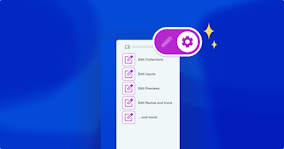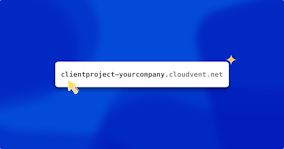Global configuration within CloudCannon

We’ve recently changed the way you set global configuration within CloudCannon. (Any previous configuration will still work, though we do recommend updating.) Rather than relying on your SSG’s config files, we now use a specific file for global configuration, which also acts as the base-level for defining options in your configuration cascade.
At a high level, this means two things. Firstly, as we add more SSGs to CloudCannon we’ll be able to provide a more consistent developer experience, meaning developers who work across multiple SSGs will be able to use their preferred configuration settings across each new project. Secondly, and importantly for developers importing existing Jamstack websites to CloudCannon, there is a much clearer separation between SSG and CMS, so it’s easier to maintain and understand what configuration is applied where. As an added bonus, there’s also less vendor lock-in to CloudCannon.
We’ve also renamed some configuration keys, removing the underscores from all but the configuration cascade variables — in those cases the underscores help to make them identifiable. (They’re also still useful there to help avoid a naming clash, as you can define them alongside front matter in files.) See our migration guide for more information, a full list of renamed keys and options, and full instructions for updating.
Finally, we’ve introduced two new keys, sort (Object), which sets the default sorting for the collection each time it’s opened, and sort_options (Array), which controls the available options in the sort menu. Each option contains key (required; defines what field contains the value to sort on inside each collection item’s data), order (controls which sort values come first), and label (the text that displays in the sort option list).
These two new keys are improvements on the previous sort_key option, which is now deprecated (though will continue to function).
Let’s look at a real-world example for a staff member collection.
Normally, the sort menu would contain all possible front matter fields from the first collection item. This is flexible enough for the general case, but likely contains fields you won't need to sort on, and the labels might be vague. Here’s how you could provide options for sorting by name both ascending and descending, and for most recent start_date first. Once set, the default options will no longer be shown:
collections_config:
staff_members:
sort_options:
- key: name
- key: name
order: desc
- key: start_date
order: desc
label: Newly-employed firstConfiguring collections is now almost entirely the same across the SSGs we support, with the only exceptions being those with more options or requirements. Working with highly configurable SSGs like Next.js and SvelteKit, for example, you will still need to define where certain files are. In any case, we’d love to see how you use our new global configuration files, and how they help your workflows.
As always, if you have questions, feel free to ask our support team in-app!
Launch your website today
Give your content team full autonomy on your developer-approved tech stack with CloudCannon.




